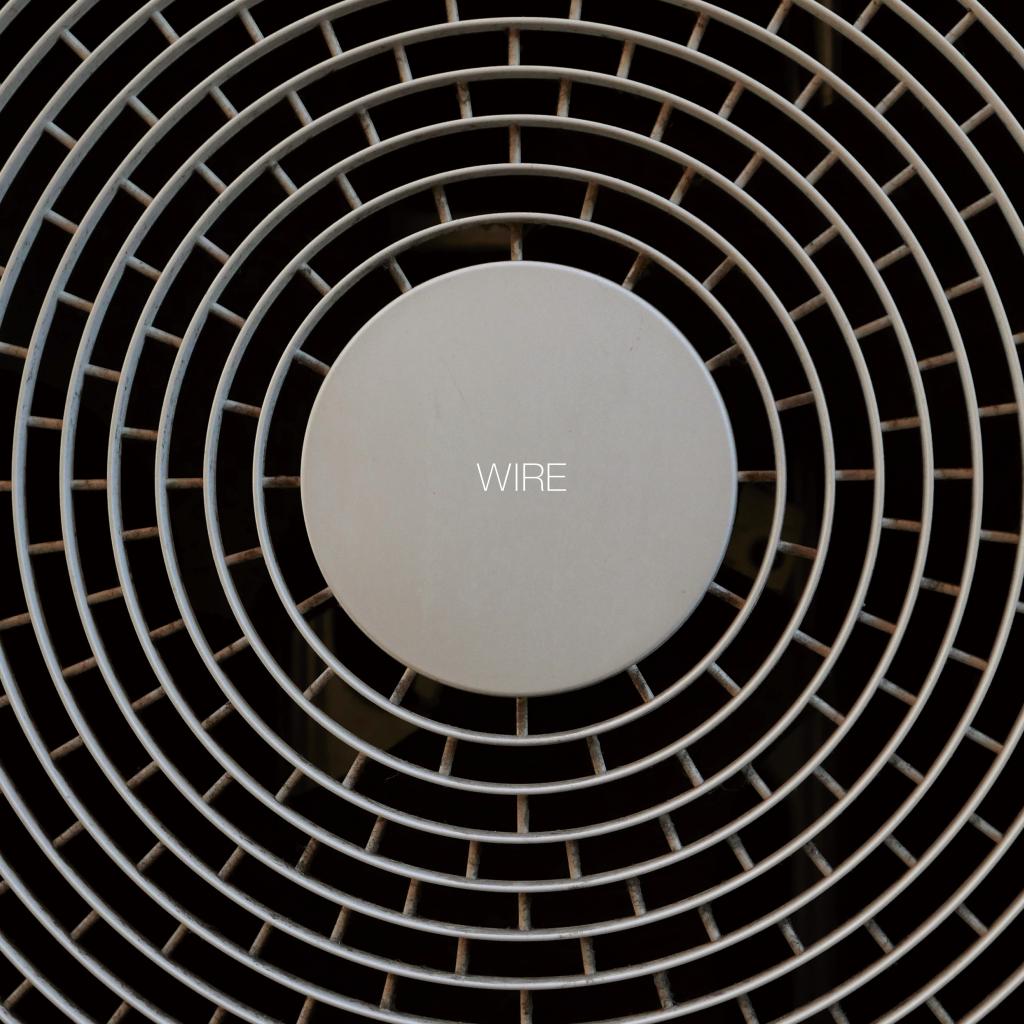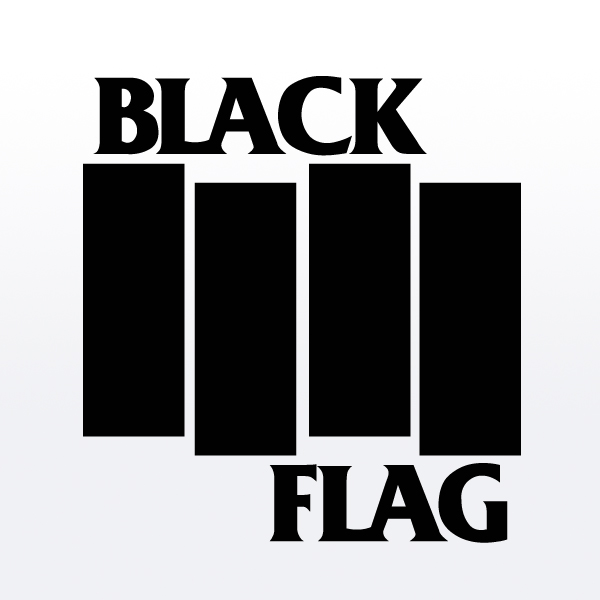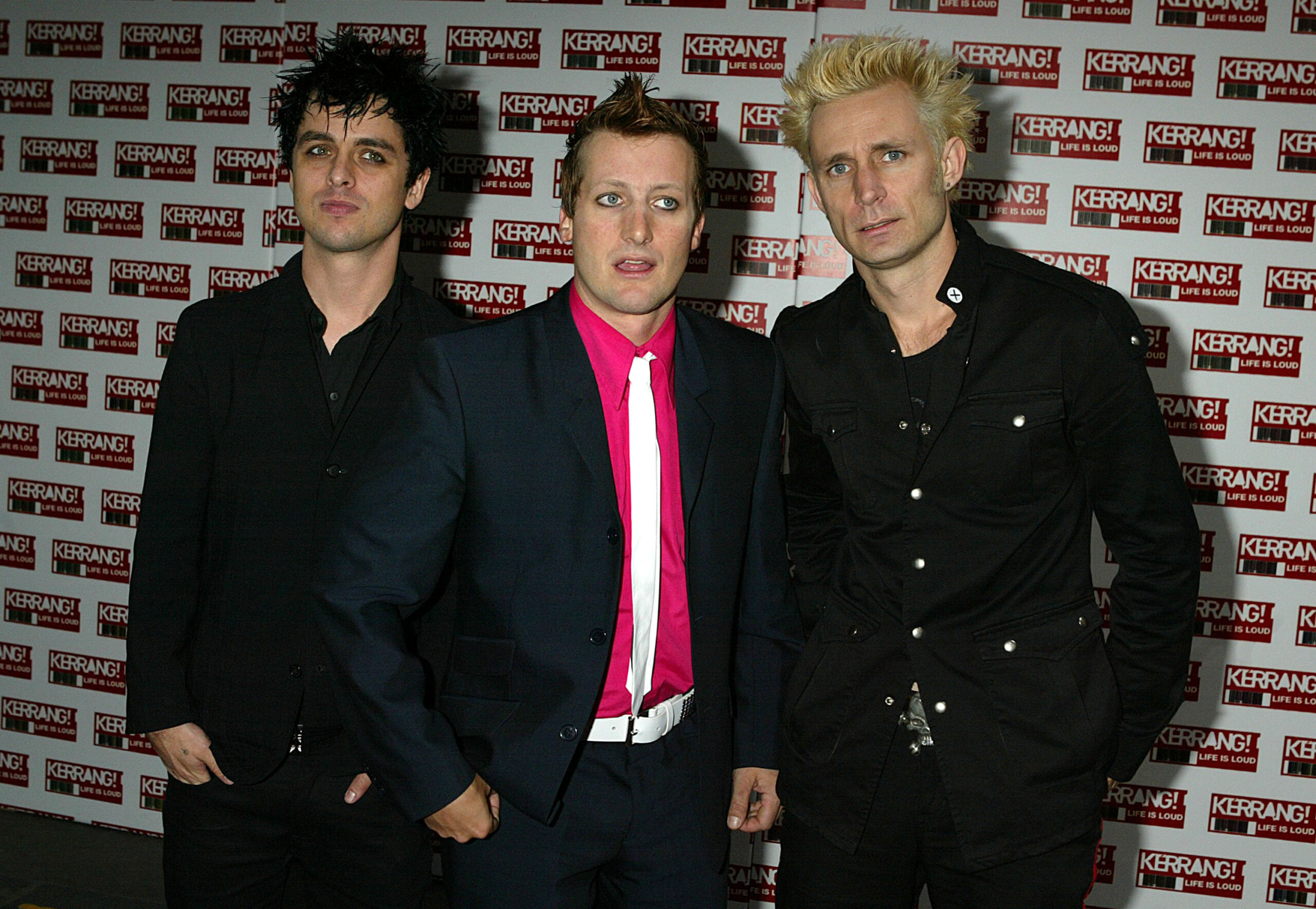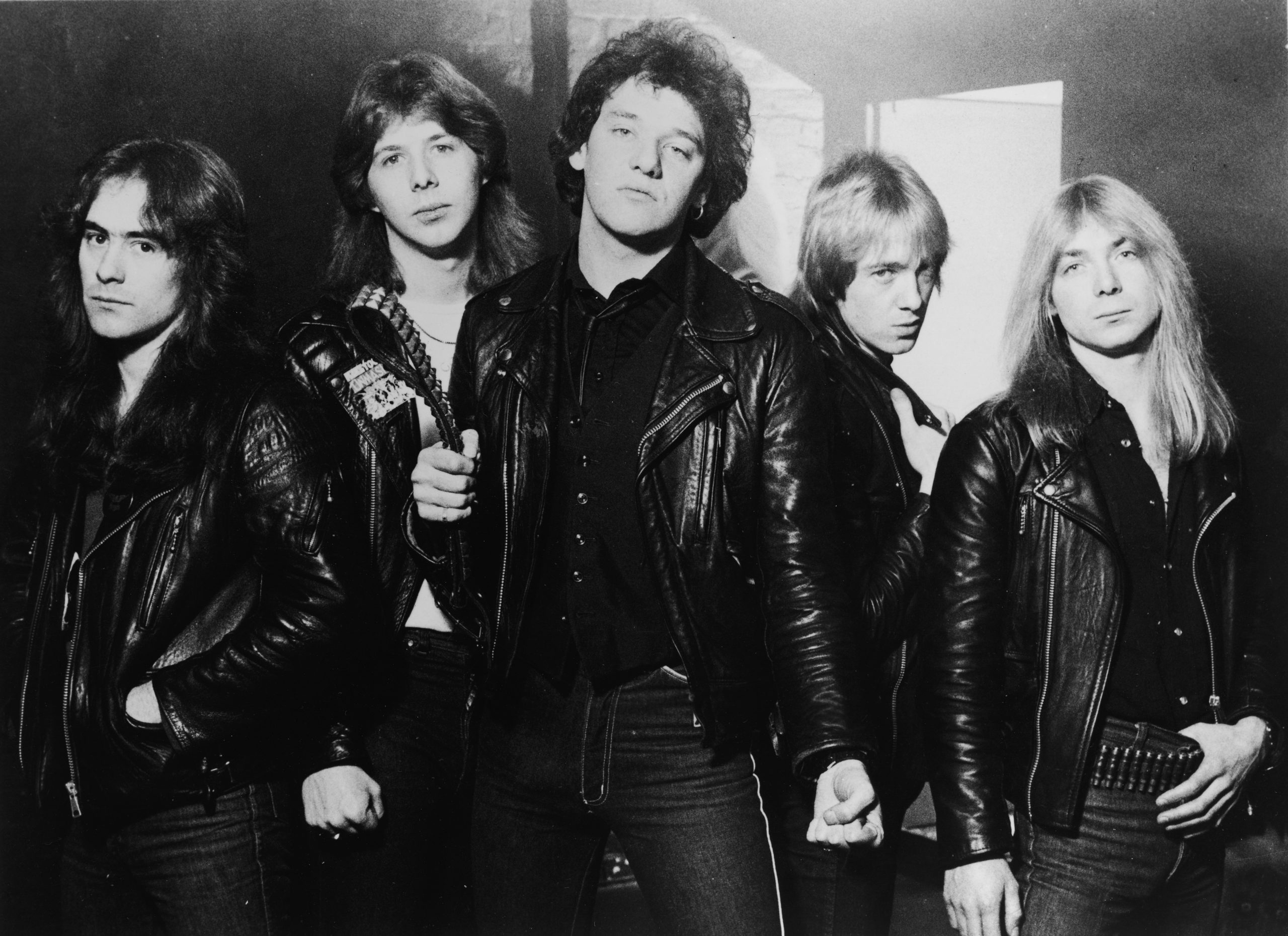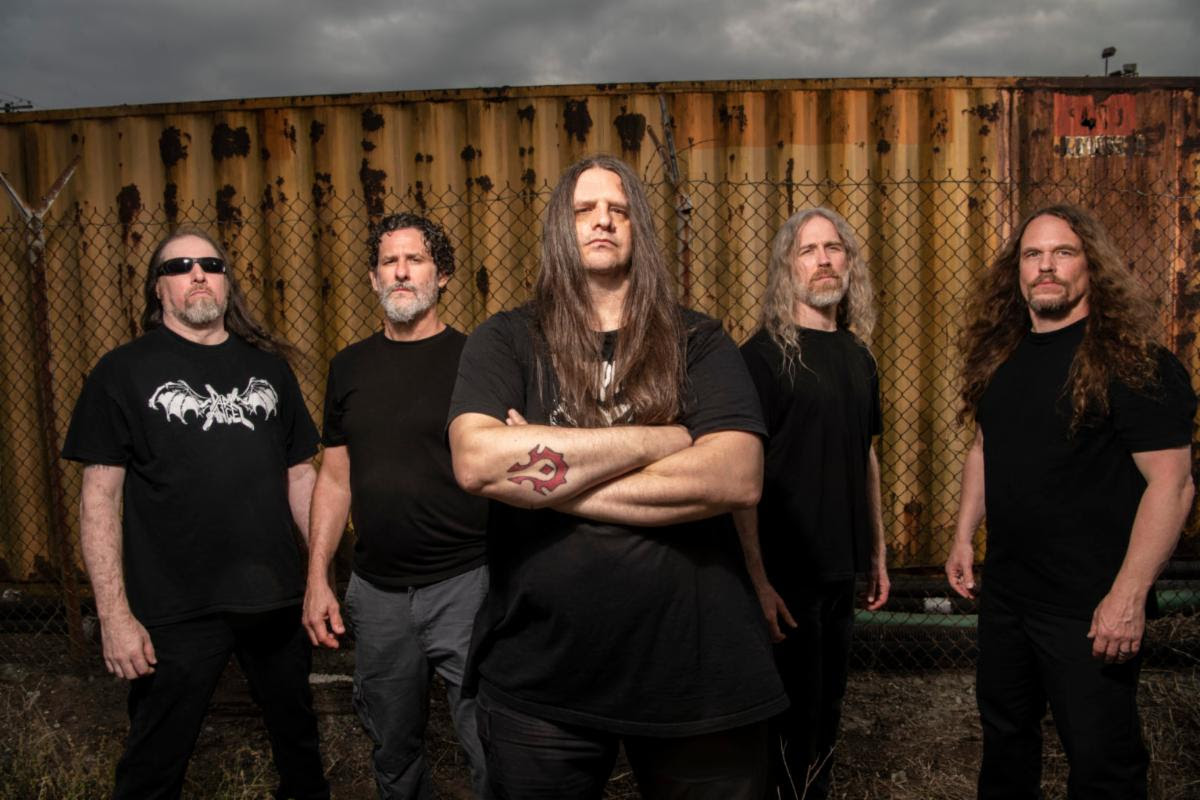"There are those who say Wire was the best punk band ever because it broke all of the rules, didn't stick with any of the blueprints and did actually what it wanted," Colin Newman told Rolling Stone in 2013. "I just wouldn't call that punk, personally. Punk is just one of those words that's so overused that you have no idea what it means anymore."
Wire did break the rules. And Wire were almost certainly the best punk band ever. But that's only if you actually believe that Wire were a punk band -- and I'm not so sure that I do, exactly. The band's debut album, 1977's Pink Flag, is a landmark album of the genre -- one of those eye-opening experiences that turns a listener's worldview upside down. It's a perfect punk album because it doesn't play by the accepted rules and regulations of what a punk song should be. On paper, it doesn't follow punk, or even pop-music logic; on headphones, it's a revelation.
Then they never did it again. Once Wire conquered one idea -- for the most part -- they were content to move on to the next one, perfect it, and then keep the process going until the tap of inspiration stopped flowing. There are three acts in the band's history: a brief but incredible one in the late '70s; a more productive but vastly different one in the '80s; and one that stretches up to their just-released self-titled 15th album. And though the duration of each of these acts varies, as does the sounds produced, there's one thing that's been constant: change.
Colin Newman, Bruce Gilbert, Robert Grey (Gotobed), and Graham Lewis formed Wire in 1976 in London, along with guitarist George Gill, who had been kicked out of the band by the spring of 1977. Yet by the time the group had actually reached the milestone of recording their first album, punk had lost much of its freshness, and Wire weren't about to rehash an already waning sound. They took the parts that were clichéd -- pub rock, American rock 'n' roll, guitar solos -- and removed them entirely from the equation. What their calculation yielded sounded vaguely familiar, but it felt different. As Wilson Neate writes in his 33 1/3 volume on Pink Flag, "Wire weren't like the other punks: They shared some of the vocabulary but spoke another language."
Understanding that language is key to understanding Wire's body of work as a whole, which twists and turns through so many stylistic and experimental alleyways that it's sometimes difficult to make sense of it all. And becoming fluent in their unique brand of melodic abstraction doesn't happen on the first try. There are more unwieldy discographies in post-punk (the Fall), or ones with fewer easy entry points (Pere Ubu), but there aren't as many that are as consistently interesting.
The band released 14 studio albums -- including the atypical 1991 release The First Letter as Wir -- plus the strange, albeit highly interesting live album Document & Eyewitness. (The Read & Burn EPs were omitted from this list because most of the songs show up on 2003's Send, though there are a few extra tracks worth seeking out.) It's a long and disorienting journey that Wire lay out across this expanse of music, but it's one that's worth getting lost in.
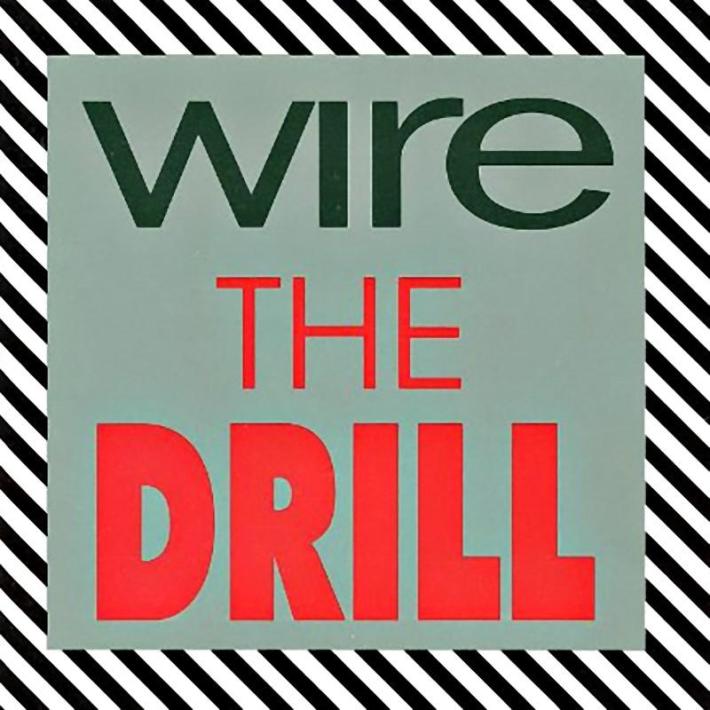
Wire's transition into the '90s was an awkward one, which can partially be attributed to founding drummer Robert Gotobed leaving the group in 1990. The band briefly kept going as a trio, and their growing interest in electronic music, theoretically, meant that the loss of live drums wouldn't leave them handicapped. However, as the band had immersed themselves into late-'80s alternative dance sounds, their creative spark had begun to fizzle, hitting its nadir on 1991's The Drill.
An album-length series of reprises of their 1986 single "Drill," The Drill is essentially a remix album packaged as a studio album, and the lone entry in Wire's catalog that smacks of contractual obligation. In its original form, "Drill" is one of the best songs the band released during their '80s resurgence, all industrial-thud rhythms and "dugga, dugga, dugga" mantra repetitions. Here, it's more of a mixed bag. When the band builds something entirely new from its rubble, as on the disco-pop opener "In Every City" and the exotic loop exercise of "What's Your Desire," The Drill reveals a band that hasn't lost its ability to innovate. On "Jumping Mint?" or "Where Are You Now?," the album grows tedious and redundant. If it's a failure, however, it's a noble one, proving that Wire still found a way to craft something halfway interesting out of running a single track into the ground.
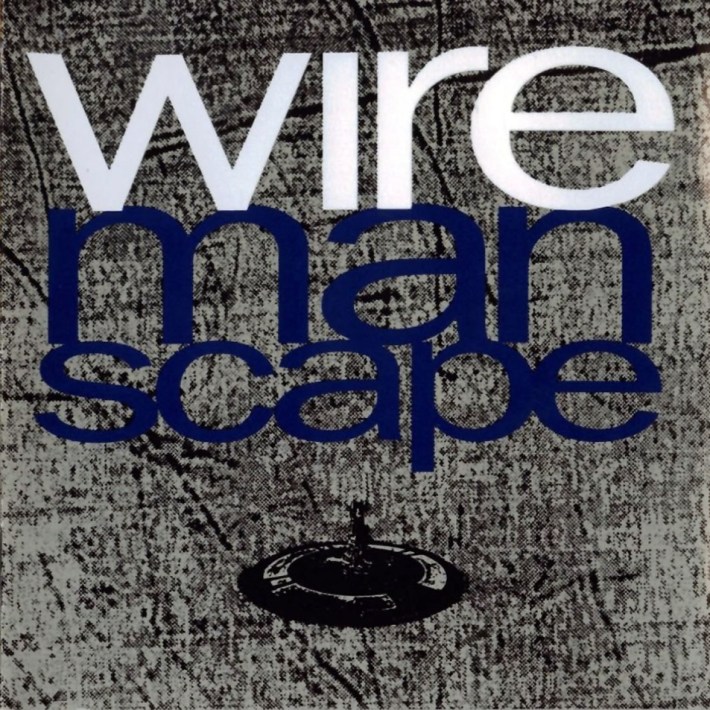
The most unfortunate thing about Manscape is its title; in context, the album has absolutely nothing to do with male grooming, but you can't really fault Wire for that coincidence, given the album came out in 1990. But almost as unfortunate is how poorly the electronics-driven sound of the record has aged. Recorded after three decent to great albums in the late '80s, Manscape finds Wire pretty much abandoning the whole rock-band setup and sticking primarily to synthesizers, which isn't a problem in itself necessarily. It's just that at this point, Wire really aren't putting them to great use. There are flashes of intriguing material, like "Sixth Sense," which would actually sound a lot like Oneohtrix Point Never if you subtracted the vocals and beats. "Small Black Reptile" is a fun slice of atmospheric pop, and "Torch It" even approaches Nine Inch Nails, if Trent Reznor sounded like a more distinguished British punk. But beyond these few highlights, so much of the album gets lost in meandering MIDIscapes that remove both the edge and the character from the band's songwriting. Add to that the slap-bass keyboard patches and flanger-heavy fuzz guitar, and for all of the things that Manscape does right, it's still an album that sounds hopelessly trapped in the early '90s.
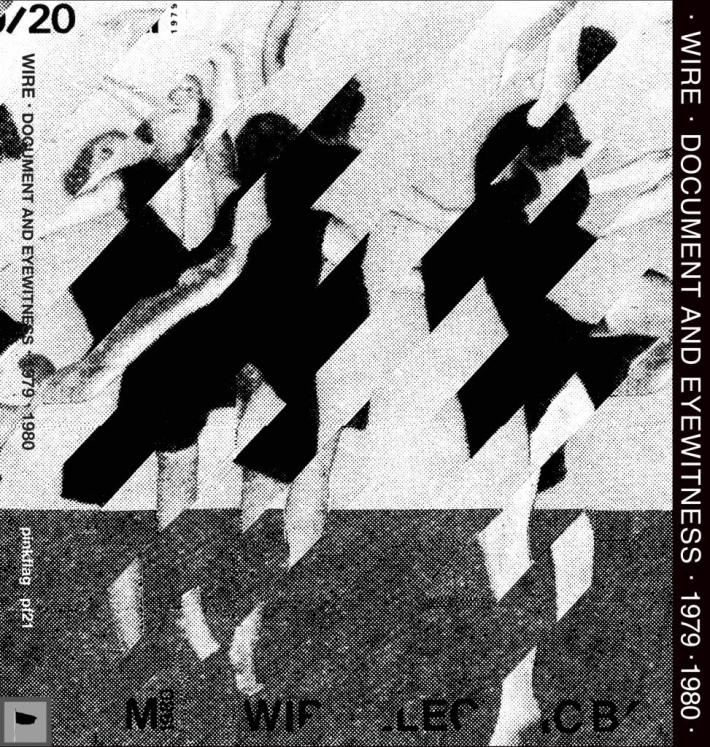
Every great band has its one notorious fiasco of a concert, whether it's Suicide's famously disastrous Brussels show opening for Elvis Costello, or Kings Of Leon getting a taste of pigeon feces in St. Louis. Half of Wire's Document & Eyewitness comprises what may well be the band's most legendary gig, which was part Dadaist cabaret (including a moving sheet, behind which the band performed), and part confrontational performance art. A goose was involved in it, somehow; per the liner notes: "Vocalist accompanied and lit by illuminated goose." It certainly sounds -- at a distance -- like one hell of a spectacle, which probably accounts for how poorly it was received by the crowd. The group plays only one song from its first three albums -- "12XU," which appears as a truncated tease, likely included for the sake of antagonizing the audience. The heckling, however, is kept for posterity, though we don't get to witness the bottles being thrown at the band.
Unfortunately, the visual spectacle doesn't translate, and the sound of the album is actually quite poor, as the eight-track recorder that captured it wasn't set up correctly. So the first half of Document & Eyewitness is mostly a jumbled mess, with the band abandoning their best material in favor of more wildly experimental stuff, which admittedly works more often than not, like the dizzying "We Meet Under Tables," the no-wave skronk of "Eels Sang Lino," or the unexpectedly melodic "Revealing Trade Secrets." But at their weirdest moments, like "ZEGK HOQP," it’s a little more like Throbbing Gristle's unsettling The Second Annual Report.
The second half of Document & Eyewitness, by comparison, more closely resembles the classic Wire of Chairs Missing or 154. These are punk songs, by and large, and excellent ones at that -- including a couple songs that the audience had probably heard before, like 154's "Two People In A Room." This half was recorded at Notre Dame Hall and Montreux in 1979, and it's basically a different band. Where the Wire on Sides A and B were undergoing a kind of nervous breakdown onstage, Sides C and D showcase the band at their peak. It's hard to square the two with each other -- especially knowing that the performances were recorded only eight months apart. If you listen to Document & Eyewitness in reverse order, you end up with what sounds like a band falling apart right in front of you.
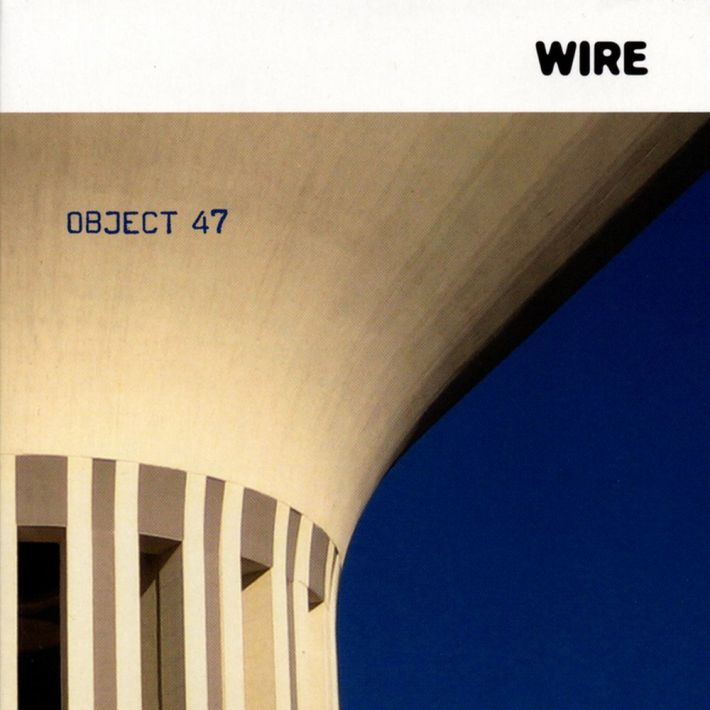
Wire's career, up to the early '00s at least, was defined by extended periods of creativity followed by several years of inactivity. Though the hiatus years outnumbered the active ones, once they put the effort into recording again, they did it at an annual clip, sometimes putting out two releases in the same year. But that all slowed down a bit on their third go-round, as Bruce Gilbert quit after a disagreement about the band's business practices. Ultimately, the group decided to continue recording their next album as a trio -- while enlisting Laika's Margaret Fiedler as a touring guitarist -- and, five years after 2003's Send, emerged with the 47th item in their catalog, appropriately titled Object 47.
Something certainly seems missing on Object 47, though it's hard to point directly to Bruce Gilbert as being that element. It sure sounds like Wire, in some kind of middle ground between Send's aggressive industrial punk and The Ideal Copy's art-pop gloss, but much more straightforward. It's not a stretch to say that this is the most normal sounding album from a band interested in being anything but. What's missing is the abstract and artful twist that made Wire's early post-punk records unique among a fertile landscape of melodic expressionists. And yet, the album is perfectly enjoyable on its own; divorced from the context of what came before, Object 47 is actually pretty good. It's certainly one of their catchiest hours, and though early singles like "Ex Lion Tamer" and "I Am the Fly" proved the band capable of sing-along accessibility, they've never sounded quite so polished or radio-friendly as they do here. Save for some of the feedback squalls provided by Helmet's Page Hamilton, there are few truly challenging moments. And that's something a band like Wire can get away with from time to time -- just so long as they don't make a habit out of it.
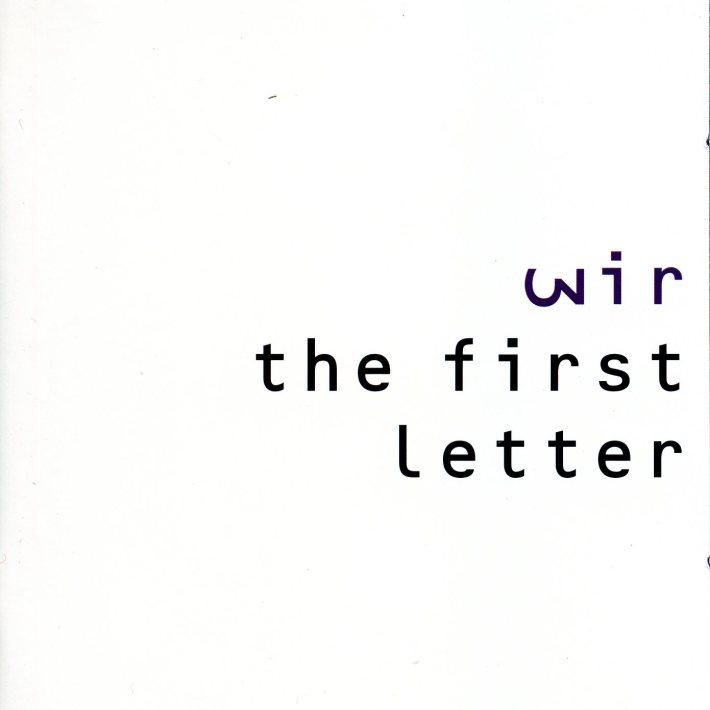
After putting so much effort into ignoring their first three albums during their productive run of material released between 1987 and 1991, Wire likely caught a few listeners off guard by starting off 1991's The First Letter with a loop of the opening guitar crunch from Pink Flag highlight "Strange." Yet it's stuck in that tense chug, ultimately forming the backbone of beat-heavy industrial dance track "Take It (For Greedy)," standing alone as the sole, elusive piece of their own history that Wire bothers to touch throughout this idiosyncratic cap on their second phase.
It's easy to read the inclusion of this self-referential sound bite as nothing more than cheek, just as their few seconds of "12XU" shows up on Document & Eyewitness as little more than trolling their audience. But it can also be interpreted as nostalgia; drummer Robert Gotobed left the band (temporarily) after the release of 1990's Manscape, and the band decided for the sake of The First Letter to drop one letter from their name -- indicating that they were now a trio (note that the W in "Wir" looks like a three). And thus, Wire became Wir.
Yet while the band acknowledges their past for the first time in years on The First Letter, as a whole it's about the band moving forward, and fully embracing the arty machine-pop direction they had been working toward. But The First Letter mostly succeeds where Manscape failed. The songs, while more explicitly engineered for dancefloors, are more fully realized than those on their last two records -- which shouldn't have been too much of a challenge, considering The Drill is a series of variations of the same idea. But there are some genuine standouts, including "Take It," two dreamy and beat-driven versions of "So And Slow It Grows," the ominous darkwave tones of "A Big Glue Canal," and the surreal factory throb of "Naked, Whooping And Such-Like," which opens with a spoken-word reading from singer and writer Claude Bessey.
It might have been interesting to see where Wire -- or Wir, rather -- could have taken this sound had they pursued it even further later on in the '90s. Instead they went dormant for nearly a decade, only to start fresh in a new decade, with yet another new approach.
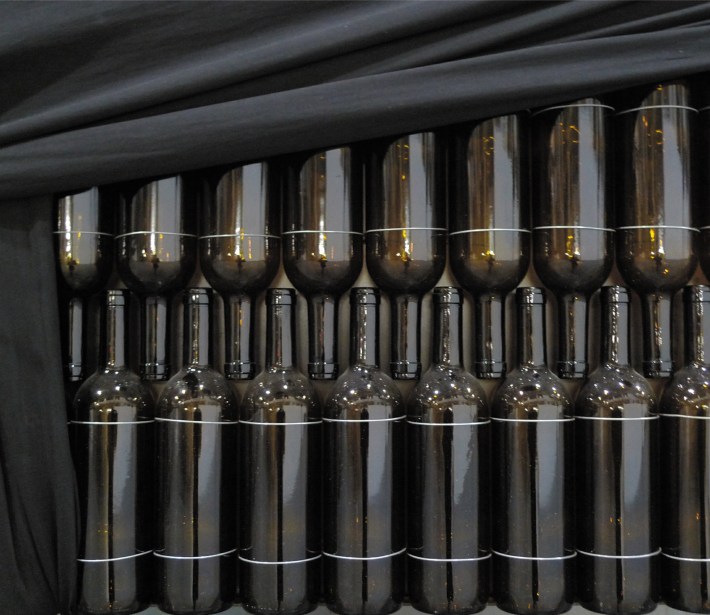
If there was ever any doubt that Wire would return to a sound heavily rooted in punk, particularly this far into their career, Graham Lewis sneering, "Fuck off outta my face" in Red Barked Tree opener "Please Take" neatly proved that, if nothing else, the attitude was still there. Yet what "punk" means, exactly, for a band like Wire -- who have deconstructed it, redefined it, and outright shunned it so many times over -- is not an easy thing to get one's head around. During their early-'00s comeback, they tackled punk as a hyper-aggressive, albeit shoegaze-inspired industrial assault. With Red Barked Tree, the aggression is toned down, but the volume and snottiness certainly isn't.
The charm of Red Barked Tree is in how loose it feels, even though the music itself is taut and cohesive. Tracks like "Now Was" and the dense "Two Minutes" are propelled by a raw energy that's only occasionally been part of the band's repertoire since the 1970s. And the dramatic, dreamy layers of "Down to This," likewise, show the band finding time to craft hypnotic art-rock in the vein of their 154 dirges. Lyrically, though -- from that first "fuck off" on -- Wire feel a bit like they're taking the piss, particularly in "Bad Worn Thing" (Lewis begins his verse with something about a "jam sandwich filled with Uzied peelers…"). I wouldn't call it trolling exactly, but they're not taking themselves too seriously, which works out fine with spunky numbers like the better tracks on Red Barked Tree. Maybe they're not playing it too seriously, but they still clearly give a shit.
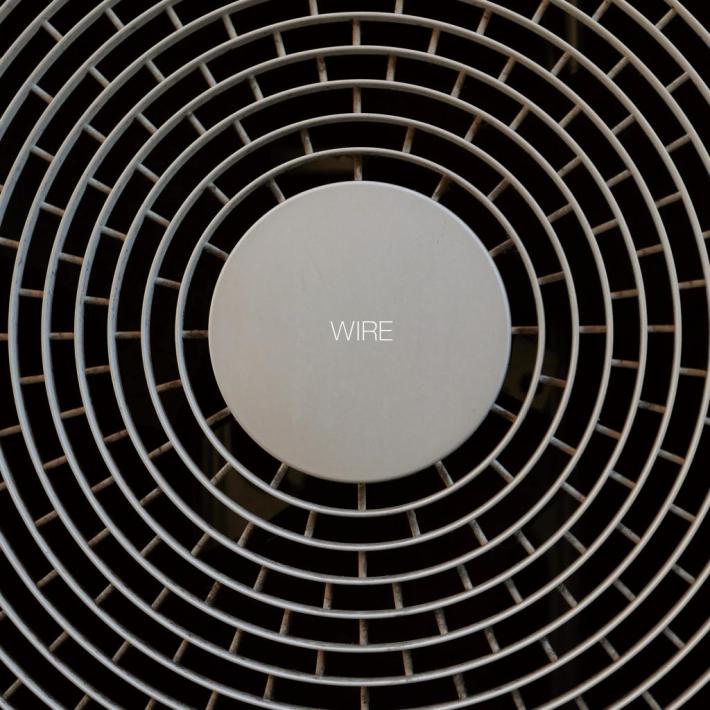
The inevitable danger of writing a song about or informed by technology -- especially one through a satirical or socio-political lens -- is the possibility that it's going to sound just as dated as the technology it indicts. So it's even stranger that Wire -- who long avoided such traps in the past -- should begin their 15th album with a song called "Blogging," which references "Google star maps," "Amazon wishlists,” and "BlackBerry hedge funds." On one hand, Colin Newman is just having fun with language, much like he did in a song like "Kidney Bingos," but it still feels a bit jarring. Wire have mostly (there are only a few exceptions) felt both timeless and ageless throughout their career, so why put a halt to that now?
It's not that "Blogging" is a bad song -- it's just a bit silly, which is a well that Wire are increasingly willing to dip into, and that's not necessarily a bad thing. There's a loose feel to Wire's self-titled album, which in turn makes it more approachable than some of their weirder, if stronger releases. But it's also solid; the album picks up a considerable amount of steam as it goes along, surging into a dreamily immediate pop sound in the standout "In Manchester," descending into a sinister and tense dirge on the seven-minute "Sleep-Walking," and knocking down another excellent punk-pop number in a brief, streamlined two minutes in "Joust & Jostle." Wire cover a fair amount of ground here -- at least as much as they have on their last two albums -- and do so while mostly sticking to a simple, pop-forward approach. That might not be that exciting when held against their most innovative records, but considering Wire spent so much of their career avoiding playing pop music, there's something kind of refreshing about hearing them take to it so readily.
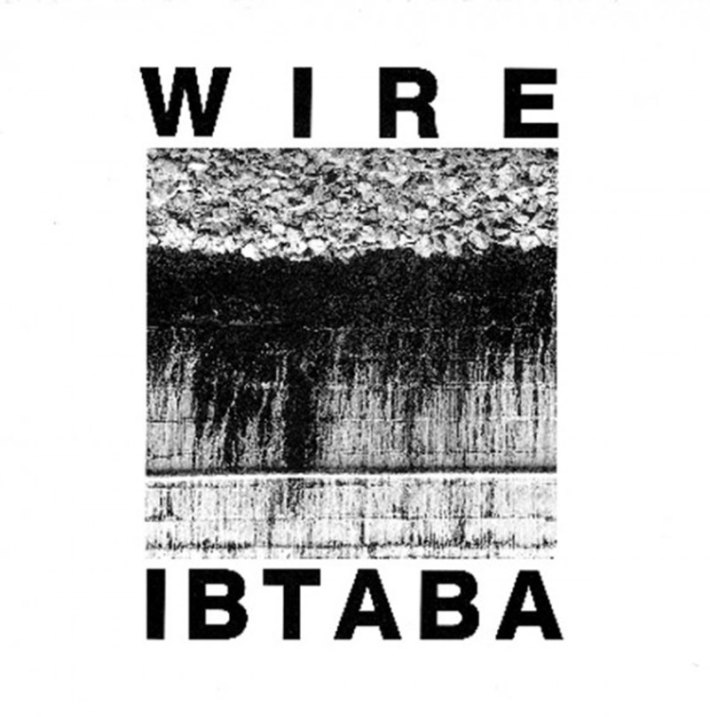
"Zee zee zee, zum zum/ Buzz buzz/ buzz buzz in the eardrum."
So goes the biggest hit single that Wire ever released, the new wave dance-rock thumper, "Eardrum Buzz." It's a fun bit of frivolity, almost atypically silly by Wire's standards. Not that they ever kept their sense of humor hidden, but considering how deeply the band had descended into art-rock gloss in the late '80s, it's actually a little refreshing to see them throw their hands up and say, "Fuck it! Let's make a pop song." That it actually more or less paid off -- placing on both the UK singles chart and Billboard modern rock tracks chart -- proves that Wire were certainly capable of going pop, if not necessarily interested.
"Eardrum Buzz" isn't all that representative of It's Beginning To And Back Again, however, which might account for why so many cassette copies of the album ended up in bargain bins not long thereafter. Yet that Wire would slot one of their catchiest songs into a selection of some of their most peculiar seems, in retrospect, entirely in character. By and large it's a good peculiar that Wire pursues here, best displayed on the extended reconfiguration of A Bell Is A Cup's "Boiling Boy," or the shimmering post-punk of "German Shepherds," the only song here that can stand toe-to-toe with the highlights on their stunning third album, 154. But while the lows on IBTABA certainly didn't tumble as far into the valleys of their next couple albums, there are some definite missteps, like the aimless ambience of "Public Place" or the vintage Wax Trax buzz-and-thud of "Illuminated." And that the band saw it necessary to fill holes in the tracklist with alternate versions of existing songs suggested they might have begun to run out of steam. Yet these aren't cardinal sins by any means. As the centerpiece of Wire's second act, IBTABA reaches neither zenith nor nadir, as the band seemingly opts for having fun rather than breaking ground.
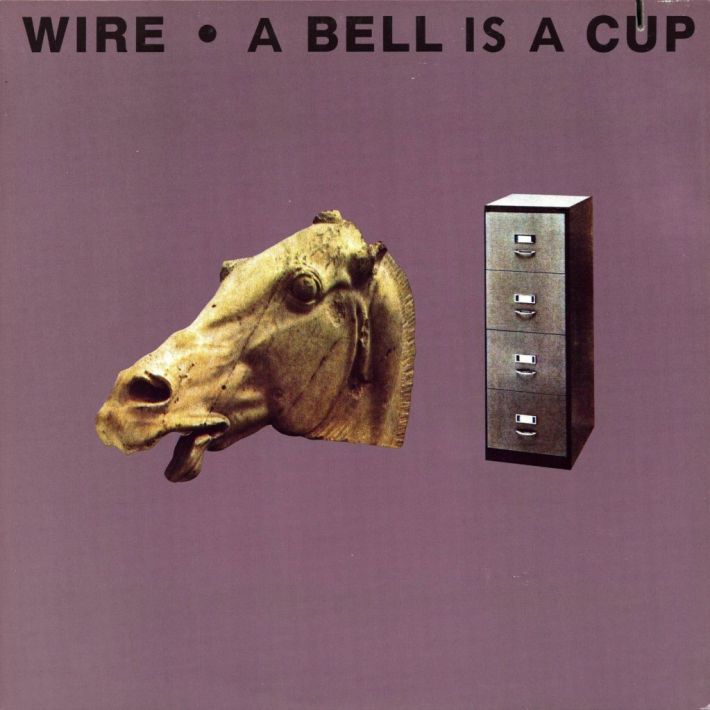
A stylistic continuation of the artful pop of 1987's The Ideal Copy, and an album that has unexpectedly become the standard-bearer prototype for Wire's post-Send output, A Bell Is A Cup Until It Is Struck is the band at their most streamlined and polished. For those who valued their minute-long fuzz outbursts on debut album Pink Flag, this might not necessarily be something to celebrate; of all the reasons to praise Wire during their most creative period (1977-1979), sounding accessibly glossy wasn't necessarily one of them.
This isn't necessarily a knock on A Bell Is A Cup. It is, perhaps, a bit too slickly produced to fully reveal the depth within its songs so readily, but they're there to be discovered, largely in the form of Colin Newman's lyrical approach. He's always been adept at wordplay and playful abstractions, but here they take on greater detail and poignancy. In "A Public Place," Newman observes pigeons scavenging in vomit: "The contents of a man's life/ In this public place/ His last mortal remains reflect a private lake." He takes a more rhythmic tone on "The Queen Of Ur And The King Of Um," commenting on "A babbling gaggle, a scrabbling rabble." And "Kidney Bingos" is sort of the band's own hyper-intellectual Bizarro World "We Didn't Start The Fire," as Newman runs down a laundry list of items clipped from tabloid newspapers: "Dressed pints/ Demon shrinks/ bread dunk/ dead drinks/ Stretch clubs/ models box/ draw skin/ black shocks."
For all of the captivating lyrical nuggets on A Bell Is A Cup, it is a bit straightforward musically, shedding much of their earlier experiments for a perfectly pleasant '80s art-pop sound. And when it's good, it's outstanding, as on the darkly seductive opener, "Silk Skin Paws," which juxtaposes one distorted riff with a lighter jangle. And "Come Back In Two Halves" is the closest thing here to a proper punk song, which is to say not that close, actually. The only real disappointment is in knowing that -- as impressive as Wire's pop songs are -- their more dissonant post-punk experiments a decade earlier were better.
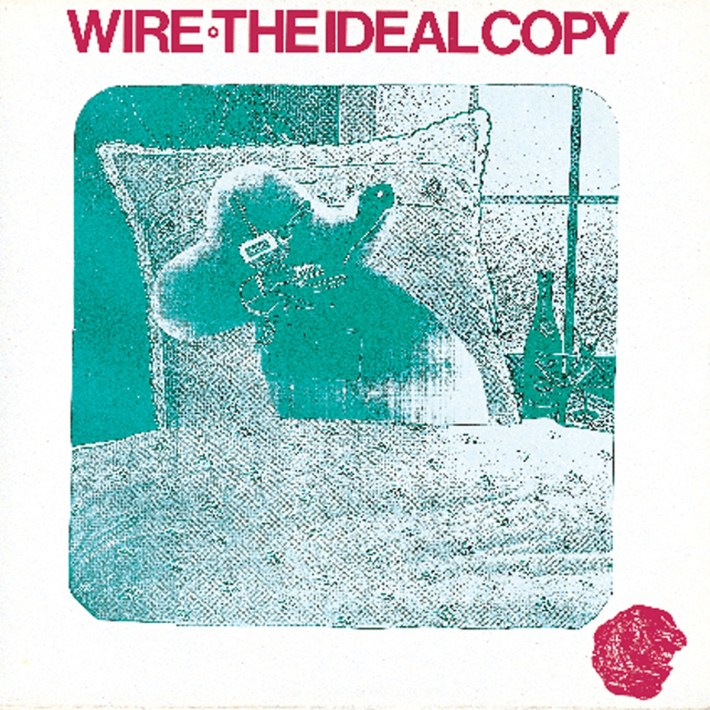
It's tricky enough for most bands to get a comeback album right, but Wire pulled it off twice. The first one, The Ideal Copy, was almost certainly a result of a five-year period of personal exploration. The band's members spent most of the '80s on their own respective artistic walkabouts, with Colin Newman and Bruce Gilbert releasing a series of solo albums, while Gilbert and Graham Lewis took on experimental material as Cupol, Dome and Duet Emmo -- in more or less that order. So when Wire finally reconvened with 1987's The Ideal Copy, so much had transpired since 154 -- and indeed so much had changed for each musician individually -- that they weren't exactly the same band whose late-‘70s triptych had redefined punk and post-punk three times over. When Wire resumed playing live, they didn't play any old material, instead leaving that up to a Wire cover band that toured with them, called the Ex Lion Tamers. Out of a combination of both stubbornness and an intense craving for reinvention, Wire started up again with a blank slate.
And yet, The Ideal Copy still retains the faintest shadow of the art-punk cubism that the group scraped onto 154's canvas. The ominous, gothic tones of the Graham-Lewis-led "Feed Me" mirror some of that album's more abstract juxtapositions of electronics and spoken word. And the woozy, proto-shoegaze textures of "Over Theirs" faintly echo the guitar shards and jerky rhythms of the group's late '70s peak. But what mostly defines the album is the updated, late '80s sheen that blankets every song, and with mostly satisfying results. In particular, lead single "Ahead" is where Wire comes closest to becoming New Order, wherein Graham Lewis' high-on-the-neck bassline draws a parallel to Peter Hook's signature style. Glossy, in this case, doesn't necessarily denote commercial, however, and one dynamite single doesn't stop Wire from making the rest of the album uniquely -- and accessibly -- weird. As peculiar and sometimes frustrating as Wire's second act would become, it certainly started out strong.
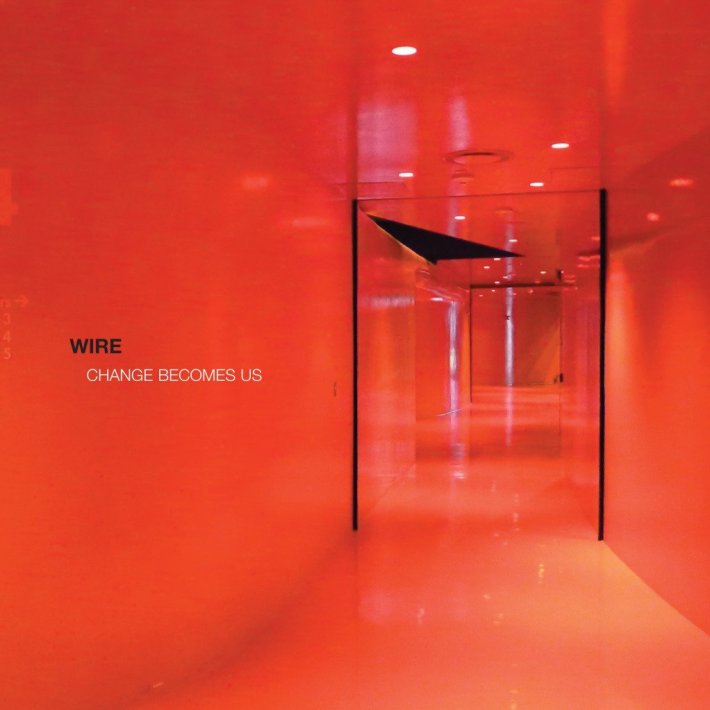
There are many bands who are inspired -- and lucky -- enough to have never released a bad album. Wire aren't quite one of those bands, but the lackluster albums aren't outright disasters, and even when working with some of their least interesting material, you can hear a kernel of inspiration amid the mediocre moments. To their credit, though, Wire never stuck with one idea for too long, so if something didn't work, they'd move on to the next one without hesitation. Even if an idea did work, come to think of it, they'd still move on.
There's something admirable about a band so motivated to never repeat the past. Except for that one time that they did, on 2013's Change Becomes Us, and it was one of their best albums in decades. The idea behind the album, which was the fourth in a series of consistently excellent post-millennial releases, is a reclamation of the material the band foisted upon a less-than-receptive audience on Document & Witness. In that context, the songs were conceptual art pieces that sounded nothing like punk, or post-punk, or even rock music in a very loose, abstract sense. And the audience didn't really care for it. Here, the songs are nearly unrecognizable from their early versions, outside of the choppy sing-speak of "Eels Sang" (originally "Eels Sang Lino"), and are transformed from loose sketches into proper songs. And they're exquisite.
"Love Bends" (a reworked "Piano Tuner [Keep Strumming Those Guitars]") is a lushly arranged new wave pop tune that leans heavily on synthesizers and dramatic hooks, while "Doubles and Trebles" (formerly "Ally in Exile") chugs with a hard-rock swagger. And though the stellar "Keep Exhaling" is less than two minutes long, it turns "Relationship" into one of the most gorgeously composed songs of the bunch. Some moments aren't as artful in their execution; "Adore Your Island" booms and bursts with the arena-rock bombast of the Who, and it's an odd fit. But it's also not necessarily a bad song, nor is any other track here, and that's illustrative of the album's conceit as a whole. Maybe there's a good idea in every song, no matter how ill-formed and undercooked, and sometimes you just need to allow them some space before they become fully realized.
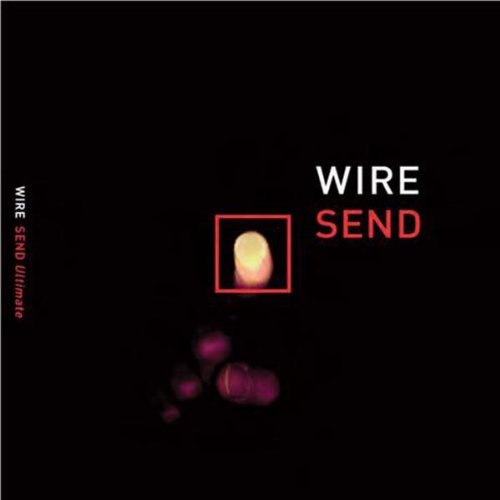
Wire might not have always been interested in acknowledging their own history -- we all heard what happened when the rowdy punk crowd on Document & Eyewitness wanted to hear "12XU" -- but they're keenly aware of it. When they've ignored their early records, as they did in the '80s, it was in an effort to redefine what Wire could be, even if the act itself seemed like a stubborn dismissal of some of the best work they ever created. By contrast, when the band restarted again around 2000, it was everything between The Ideal Copy and The First Letter that ended up on the no-fly list.
The group -- once again featuring all four original members -- recorded a pair of EPs titled Read And Burn (the bulk of which ended up on Send), and began performing live again. But most telling of all about this new act was that songs from Pink Flag once again found their way into the setlist. In fact, if there's an album in Wire's catalog that their 2003 comeback Send resembles most, it's Pink Flag. But it's also a fairly weird, modern reinterpretation of Pink Flag. The tracks pummel and explode with machine-gun industrial beats, which at the time sounded unusually harsh. As much as Send sounds like classic Wire, relatively speaking, there are times when it sounds even more like a Ministry album.
And, you know, that's actually not such a bad thing. Coming from a group of 50-year-olds, Send is a bold statement, but one that yielded some surprisingly strong material. The machine-punk production is a bit of a Trojan horse, however; for as heavy as tracks like "In the Art of Stopping" and "Mr. Marx's Table" sound on first listen, they're more nuanced and layered than they seem, almost shoegaze-like in their rich beds of distortion. Colin Newman and Graham Lewis bark with more ferocity than they have in ages, and it's safe to say that there's no Wire album that sounds quite as bass-heavy as this one does. Which makes it all the more rewarding to find the humor and lightheartedness in upbeat punk songs like "Comet" (the chorus goes, "And the chorus goes/ And the chorus goes/ b-b-b-b-b-bang") and "In The Art Of Stopping," which uses its title as a cue to drop to a complete silence for a full second. It's not simply the fact that Send sounds more punk than its '80s and '90s predecessors that makes it superior; it's the fact that, for the first time in years, Wire really sounds like they're having fun.

Before Wire took their first extended hiatus in the early '80s, they released what would end up being their most complex album -- the diverse, challenging and hallucinatory art-punk masterpiece, 154. Named for the number of gigs the band had played up to that point, it marked not only a creative peak for the group, but the point where the individual musicians were at their tightest. Wire in 1979 certainly sounded like a band that had 154 shows under their belt, and could probably tear through another 154 without missing a beat. They were no longer a scrappy band of upstarts with a skewed approach to the power chord -- they were a tightly wound unit, locking into place with stunning precision. You can hear it in Robert Gotobed's opening drum fill on "A Single K.O.," or on the tense repetition of "Two People In A Room." They're fucking on.
Yet for as tight as Wire sounds on 154, it's a very stylistically loose album. Many of its highlights are beefier, heavier extensions of the abrasive post-punk sounds they explored on Chairs Missing, like the scratchy new wave jitters of "On Returning," or the perpetually building "Blessed State." But on several occasions, the group takes bizarre, eerie detours into ambiance and spoken word abstraction, like "The Other Window," which tells the story of a man on a train, watching a horse die as its tangled in a barbed-wire fence. It's unsettling, to say the least.
The valley between the more accessible moments on 154 and the peculiar, experimental ones is vast, though the album is paced well enough that it all more or less makes sense as part of the greater whole. And yet, two songs stand a little bit taller than the rest: "The 15th" and "Map Ref 41°N 93°W." The former stacks dreamy strata of guitars beneath Colin Newman's vocals, the lyrics of which are indecipherably abstract, but sound absolutely heavenly. The latter, however, is the catchiest new wave proto-shoegaze song ever written about cartography. It's probably the only new wave proto-shoegaze song ever written about cartography, but it just so happens that this one is exceptionally good. Not that there's a single bad track in the bunch, as experimental and unconventional as some of them are. They broke up a year later, famously saying they had run out of ideas, and considering how many they crammed onto this record, it's easy to see how they might've run out of steam. While Wire didn't stay broken up for long after this album, had they taken their final bow here, their legacy would have been essentially flawless.
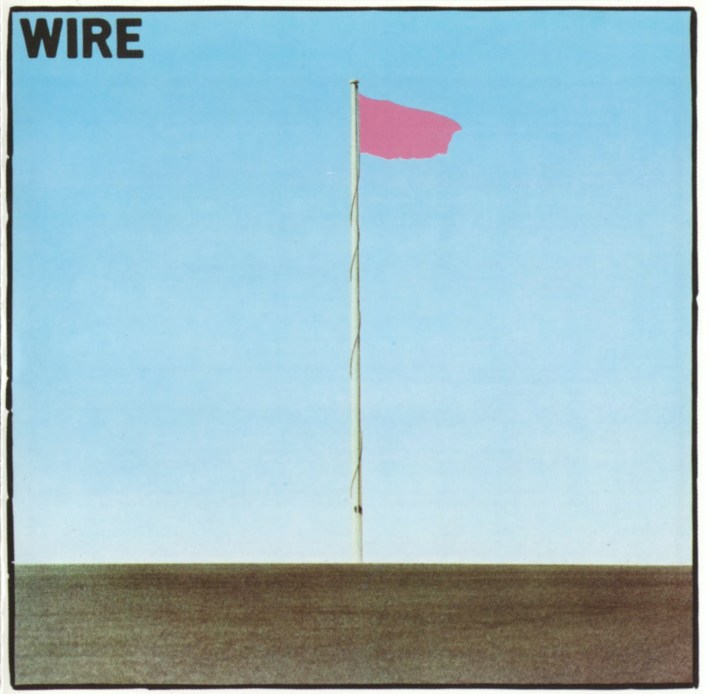
First of all, let's hear it for 1977. Those 12 glorious months saw the release of debut albums by Elvis Costello, the Clash, the Damned, Suicide, Television, Richard Hell And The Voidoids, the Stranglers, the Saints, the Sex Pistols, and Talking Heads. And that's before we even get to albums by veterans like Kraftwerk, Iggy Pop, and David Bowie, as well as the second and third albums by the Ramones. And arriving in December, coming in right before the final curtain with 21 songs in 35 minutes, is Wire's incredible debut, Pink Flag.
Both a product of the 1977 punk explosion and on a different plane entirely, Pink Flag is an art rock record in punk clothing. Indeed, its fuzzy and youthful minute-long bangers paralleled the rawness of contemporaries like the Clash and the Damned. And the quartet still had a ways to go before sharpening their instrumental skills, which makes the album unpolished, but far from chaotic (the one chaotic element -- guitarist George Gill, prone to shouting "FUCK!" during performances -- had been ejected from the band before recording). But while Pink Flag has all the elements of your basic punk rock record, the way the band pieces them all together is something far less recognizable as such, and much more progressive.
The word that's typically thrown around when discussing Pink Flag is "minimal," but it's not for a shortage of ideas. The minimalism is in the structure of the songs themselves; the band has said in the past that they ended a song whenever it ran out of words, and in this case, that leaves 13 of 21 songs with a running time of less than 90 seconds, and of those 13, six are under a minute. It's to Wire's credit, then, that nothing feels unfinished or undercooked. The shortest song of the bunch, "Field Day For The Sundays," runs a tight 28 seconds, with just one verse and one chorus, and absolutely nothing else. It's a marvel of British engineering.
By comparison, the longer songs feel utterly monumental. Opening track "Reuters," with its ominous, single-chord opening drone, doesn't even sound like it should be on a punk album. And it only becomes more unsettling and disorienting toward the end of the song, with its brief chant of "Looting! Burning! Rape!/ Rape/ Rape." And there's a slinky groove to "Lowdown," but its funk is oddly menacing. But in the album's most accessible moments -- and there are quite a few -- Wire sheds some of that darkness for something more fun. "Ex Lion Tamer" is one of a few songs that actually arrives at a chorus more than once, and that chorus of "Stay glued to your TV set!" is likewise the one most likely to elicit sing-alongs. But I can't wrap this up without talking about "Three Girl Rhumba," the hip-swinging new-waver that was the basis for the riff in Elastica's "Connection." It led to an out-of-court settlement and a permanent change in the songwriting credits for "Connection," but there's also a fair argument that Elastica introduced Wire to a generation that might not have otherwise heard of them. Twenty years later, I can't help but envy the teenagers of today, who get to experience Pink Flag for the first time.
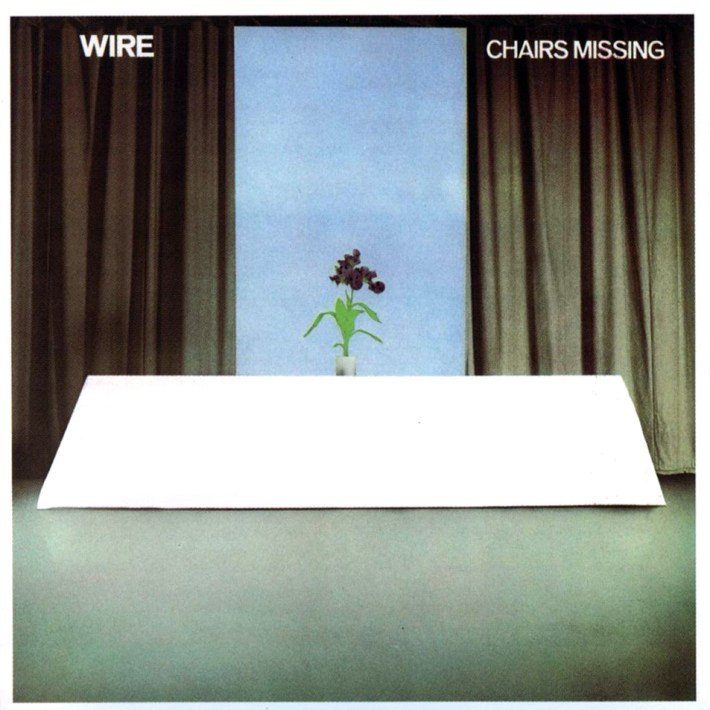
There are few institutions in music -- save for maybe the hip-hop debut -- as celebrated as a punk band's debut album. The Clash, the Damned, and the Ramones -- to name a few noteworthy members of the club -- each pretty much got it perfect the first time around, which is both a great way to kick off your career, and an incredibly difficult thing to live up to. And each band did eventually surpass that debut album on their third try: the Clash with London Calling, the Damned with Machine Gun Etiquette, and the Ramones with Rocket To Russia. For Wire, however, it only took 15 songs and 10 months to make the journey from their debut album to their highest peak, Chairs Missing.
To listen to Pink Flag and Chairs Missing back to back, it seems remarkable that these albums were even made by the same band. Chairs Missing still has the unmistakable voice of Colin Newman, and the same arty, expressionist approach to songwriting that adamantly avoided conventional pop structures (though there are a few more recognizable choruses here). But instrumentally and atmospherically, this is a big step into an entirely new territory.
On Chairs Missing, Wire push themselves a lot farther into the avant garde than they had before. Certainly, Pink Flag is about as strange as a punk album can get without stepping out of the punk aesthetic, but Chairs Missing is an art-rock album played two minutes at a time, at 160 BPMs. A few of the tracks sound like the Wire of old: the stomping "From the Nursery," the bright and jittery "Sand In My Joints," and the hard-rocking closing number, "Too Late." But the real beauty of Chairs Missing is hearing what happens when Wire dials up the weirdness, and that weirdness is really something to behold.
Opening track "Practice Makes Perfect" is just as dark and menacing as Pink Flag's "Reuters," but vastly scarier. It escalates a spiral staircase of a bassline up toward some shards of horror-soundtrack guitar, as Newman delivers an increasingly creepy narrative that reaches its chilling climax when he says, "Up in my bedroom/ I've got Sarah Bernhardt's hand." The band incorporates some dizzyingly uptempo synth leads on "Another the Letter," builds up a tempestuous head of steam on the intense, six-minute "Mercy," and showcases their more ambient, dirge-heavy side on the hushed and melancholy "Marooned" and the itchy, psychedelic "Used To."
And yet again, Chairs Missing -- much like 154 -- balances out some of the band's weirder textural experiments with a pair of tracks that showcase their melodic prowess. And they're both about bugs. The title of "Outdoor Miner" refers to the serpentine miner -- a type of inchworm -- and its sing-songy chorus of "He lies on his side/ Is he trying to hide?/ In fact it's the earth that he's known since birth" puts a weirdly affectionate spotlight on a creature that would otherwise go unnoticed. It's also, I should note, one of the prettiest songs in the band's repertoire. By contrast, "I Am The Fly" is a clap-along post-punk single that's more in the punk spirit than anything else here, Newman repeating the phrase "I am the fly in the ointment" as the song carries out on an abrasive, albeit unshakable groove.
The title of Chairs Missing, it should be noted, is an English slang term for being mentally imbalanced -- for instance: "That guy's got a few chairs missing in his parlor." It's fitting for an album that so frequently dabbles in the unsettling and the disorienting. And on a first listen, it might all sound a bit off. But listen closer -- every track is so intricately crafted, and every piece seems to lock into place perfectly. Wire knew exactly what they were doing.
